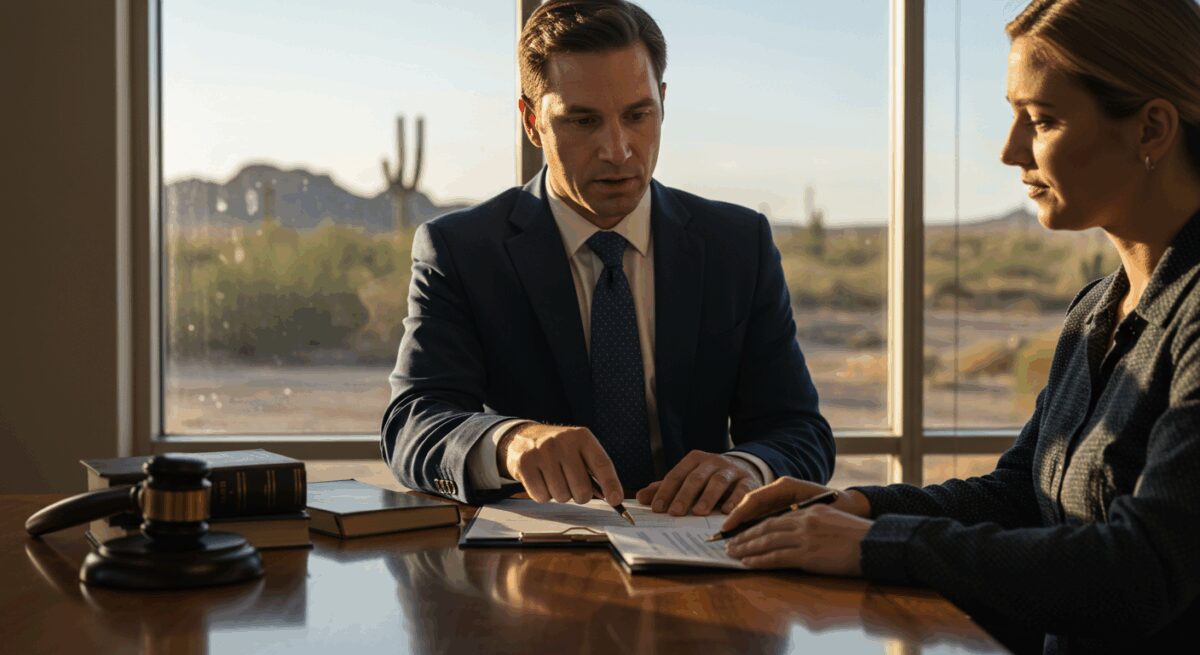Car Accident Lawyer Contingency Fees: Arizona Guide

After a car accident in Arizona, financial stress can compound physical injuries and emotional trauma. The last thing you need is unexpected legal bills piling up while you’re trying to recover. Fortunately, Arizona car accident lawyers typically work on contingency—meaning you pay nothing upfront and only pay legal fees if they successfully recover compensation for you. Understanding how these fee structures work can help you make informed decisions during a challenging time and ensure you get the legal representation you deserve without adding financial strain.
What Are Contingency Fee Arrangements?
Contingency fee arrangements represent a fundamental shift from traditional legal billing. Instead of charging hourly rates or requiring retainers, personal injury attorneys agree to accept a percentage of your final settlement or court award as their payment. This system creates alignment between your interests and your lawyer’s—they only get paid when you get paid. For accident victims facing medical bills and lost income, this arrangement provides access to quality legal representation that might otherwise be financially out of reach.
The contingency model also incentivizes attorneys to maximize your recovery. Since their compensation depends on the outcome, they have strong motivation to thoroughly investigate your case, negotiate aggressively with insurance companies, and if necessary, take your case to trial. This contrasts with hourly billing where lawyers might benefit from dragging out proceedings. With contingency fees, efficiency and results become paramount.
Standard Contingency Fee Percentages in Arizona
While Arizona doesn’t have statutory limits on contingency fees, the legal community has established standard ranges through practice and ethical guidelines. Most car accident attorneys in Arizona charge between 33% and 40% of the recovery, with the specific percentage often depending on when the case resolves.
Before filing a lawsuit, when settlement occurs through negotiation with insurance companies, attorneys typically charge 33% of the recovery. Once litigation begins and a lawsuit is formally filed with the court, the percentage often increases to 40% due to the substantial additional work involved—drafting pleadings, conducting discovery, preparing for trial, and actually trying the case. Some firms use a sliding scale where the percentage increases if the case proceeds to certain stages, such as 33% pre-litigation, 40% after filing, and 45% if the case goes to trial.
Several factors can influence where your fee falls within this range:
- Case complexity – More complicated cases involving multiple parties, severe injuries, or disputed liability may justify higher percentages
- Attorney experience – Highly experienced lawyers with proven track records often command higher percentages
- Case risk – Cases with questionable liability or minimal insurance coverage may involve higher risk for the attorney
- Expected recovery – Smaller potential settlements might require a higher percentage to make the case economically viable for the attorney
What Your Contingency Fee Covers
Understanding what’s included in your contingency fee agreement is crucial. The percentage your attorney charges typically covers their legal services, including case evaluation, investigation, document preparation, negotiations with insurance companies, and representation throughout the legal process. However, many accident victims are surprised to learn that case costs and expenses are usually separate from the attorney’s fee percentage.
Common case expenses that may be deducted from your recovery include:
- Filing fees and court costs
- Expert witness fees (medical professionals, accident reconstruction specialists)
- Deposition costs (court reporters, transcription services)
- Medical record retrieval fees
- Investigator expenses
- Postage, copying, and administrative costs
Most Arizona car accident lawyers advance these costs during your case and then deduct them from your final settlement or award. It’s essential to discuss how expenses will be handled during your initial consultation and ensure this is clearly outlined in your representation agreement. Some firms cap the amount they’ll advance for expenses, while others may require reimbursement regardless of the case outcome.
Key Elements in Your Fee Agreement
Your contingency fee agreement is a binding contract that dictates your financial relationship with your attorney. Arizona requires these agreements to be in writing, and they should clearly specify several critical elements. The percentage the attorney will receive should be explicitly stated, along with any circumstances that might change this percentage. The agreement should detail how expenses will be handled—whether they’re deducted before or after calculating the attorney’s percentage, and whether you remain responsible for them if the case is unsuccessful.
Look for clear language about what happens if you decide to change attorneys or withdraw from the agreement. Most contracts include provisions for attorney liens on your recovery, which protect the lawyer’s right to payment for work already performed. The agreement should also specify how any appeals would be handled and whether additional fees would apply. Don’t hesitate to ask questions about any provision you don’t understand—a reputable attorney will welcome these discussions and ensure you’re comfortable with the terms before proceeding.
Comparing Arizona’s Fee Structures to Other States
Arizona’s approach to contingency fees falls within the mainstream of national practices, though some states have implemented additional consumer protections. Unlike states like Tennessee and New Jersey that have statutory fee caps for certain types of cases, Arizona relies on market competition and ethical rules to regulate fees. This generally works to clients’ advantage, as competition among Arizona’s numerous personal injury firms helps keep fees reasonable while maintaining access to quality representation.
What sets Arizona apart is its robust consumer protection environment within the legal profession. The State Bar of Arizona actively enforces rules against excessive fees, and courts retain authority to review fee agreements for reasonableness. This creates a balance between contractual freedom and consumer protection that typically serves accident victims well. When comparing fee structures, it’s also worth noting that some states have different standard percentages or additional regulations that can affect your net recovery.
Maximizing Your Net Recovery
While contingency fees provide access to legal representation, your ultimate goal is to maximize the amount you keep after legal fees and expenses. Several strategies can help ensure you receive fair compensation for your injuries while minimizing the impact of legal costs. First, provide your attorney with complete and accurate information from the beginning—this helps them build the strongest possible case efficiently, reducing unnecessary expenses.
Second, be responsive to your attorney’s requests for information or documentation. Delays often increase costs as cases languish and require duplicate efforts. Third, discuss settlement strategy with your attorney—sometimes accepting a reasonable early settlement can net you more money than pursuing a slightly higher amount through lengthy litigation with increased fees and expenses. Finally, understand that while negotiating a lower fee percentage might seem advantageous, an experienced attorney who commands a standard percentage may ultimately secure a much larger recovery, leaving you with more money even after paying their fee.
Remember that contingency fee arrangements are designed to be win-win: your attorney has strong incentive to maximize your recovery because their compensation depends on it. This alignment of interests means you and your lawyer are working toward the same goal—getting you the full compensation you deserve for your medical expenses, lost wages, pain and suffering, and other damages.
Whether you’re dealing with a straightforward fender-bender or a complex multi-vehicle collision, understanding contingency fee structures helps you approach your legal representation with confidence. The right attorney can navigate Arizona’s legal landscape while you focus on what matters most—your recovery and well-being.



